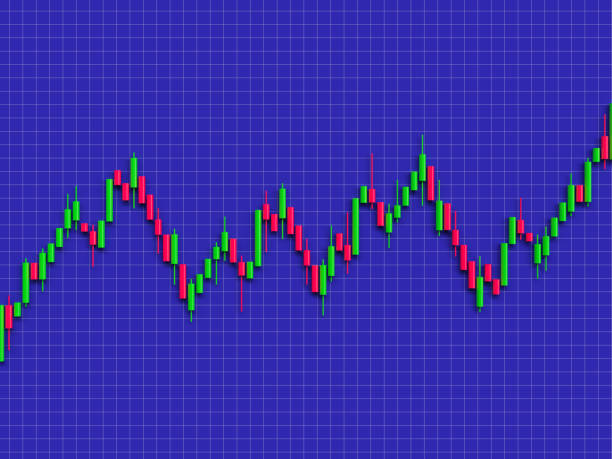Head and Shoulders Pattern Overview
The Head and Shoulders pattern is a widely recognized chart pattern in technical analysis that indicates a potential trend reversal. It consists of three peaks, with the middle peak (the head) being higher than the two surrounding peaks (the shoulders). This pattern is considered bearish when it appears after an uptrend, signaling a possible shift towards a downtrend in the market.
Traders use the Head and Shoulders pattern to identify key levels of support and resistance, helping them make informed decisions about when to enter or exit a trade. By understanding the structure and significance of this pattern, traders can gain valuable insights into market sentiment and future price movements.
Identifying the Head and Shoulders Pattern
The head and shoulders pattern is a common technical analysis formation that signals a potential trend reversal. This pattern consists of three peaks – a higher peak (the head) in between two lower peaks (the shoulders). The neckline connecting the lows of the two shoulders acts as a support level that, when broken, confirms the pattern.
To identify a head and shoulders pattern, look for a peak (the head) that is higher than the surrounding peaks (the shoulders). The two shoulders should ideally be at a similar level, with the neckline drawn connecting the lows of the shoulders. Traders often wait for the neckline to break to confirm the pattern and consider it a signal to enter a short position.
Trading platform is an essential tool for traders looking to execute trades and analyze market trends. With the help of a reliable trading platform, users can access a wide range of financial instruments, including stocks, forex, commodities, and cryptocurrencies. By utilizing the features and tools offered by a trading platform, traders can make informed decisions, manage their portfolios, and take advantage of market opportunities. Whether you are a novice or an experienced trader, having a robust trading platform at your disposal can significantly enhance your trading experience and help you achieve your financial goals.
Understanding the Inverse Head and Shoulders Pattern
The inverse head and shoulders pattern is a technical analysis formation that suggests a potential trend reversal from a downtrend to an uptrend. It consists of three consecutive troughs, with the middle trough (head) being lower than the other two troughs (shoulders). The neckline is drawn by connecting the highs between the shoulders. This pattern is considered bullish, indicating a shift from selling pressure to potential buying pressure.
Traders often look for the inverse head and shoulders pattern as a signal to enter into a long position, anticipating a price movement higher. The pattern is confirmed when the price breaks above the neckline, which is seen as a buy signal. It is important to note that the volume should ideally increase as the price breaks above the neckline, validating the strength of the potential reversal. Implementing proper risk management strategies and confirming the pattern with additional technical indicators can help traders increase the probability of a successful trade based on the inverse head and shoulders pattern.
Key Differences between Head and Shoulders Pattern and Inverse Head and Shoulders Pattern
The key difference between the Head and Shoulders pattern and the Inverse Head and Shoulders pattern lies in their directional implications. The Head and Shoulders pattern is a bearish reversal pattern that indicates a potential trend change from bullish to bearish. It consists of three peaks, with the middle peak (the head) being higher than the other two peaks (the shoulders). On the other hand, the Inverse Head and Shoulders pattern is a bullish reversal pattern that suggests a shift from bearish to bullish momentum. This pattern comprises three troughs, with the middle trough (the head) being lower than the other two troughs (the shoulders).
Another significant difference between the two patterns is their market sentiment interpretation. The Head and Shoulders pattern is seen as a sign of weakness in the market, as it signifies an exhaustion of buying pressure and a potential upcoming downtrend. Conversely, the Inverse Head and Shoulders pattern represents a positive sentiment, signaling a reversal from a downtrend to an uptrend. Traders often view the Inverse Head and Shoulders pattern as a bullish confirmation, indicating a potential uptrend continuation.
Signs of a Reversal Signal in the Inverse Head and Shoulders Pattern
The first sign to look for in the Inverse Head and Shoulders pattern is the formation of three distinct price points: the left shoulder, the head, and the right shoulder. The left shoulder is typically formed by a peak followed by a decline, the head is the lowest point in the pattern, and the right shoulder is another peak followed by a decline. This structure indicates a potential trend reversal from bearish to bullish.
Another key sign of a reversal signal in the Inverse Head and Shoulders pattern is the neckline. The neckline is a trendline that connects the highs of the left and right shoulders. A breakout above this neckline confirms the validity of the pattern and signals a potential bullish reversal. It is essential to wait for the breakout to occur before acting on the reversal signal to avoid false signals and ensure a higher probability of success in trading.
How to Confirm a Reversal Signal in the Inverse Head and Shoulders Pattern
To confirm a reversal signal in the Inverse Head and Shoulders pattern, it is essential to look for certain key indicators that validate the potential change in trend. One of the primary factors to consider is the volume during the formation of the pattern. An increase in volume as the price approaches the neckline and breaks above it can indicate strong buying interest and support the likelihood of a bullish reversal.
Additionally, traders should pay attention to the neckline retest after the breakout. A successful retest where the price holds above the neckline and continues to move higher can serve as confirmation of the reversal signal. This behavior demonstrates that the previous resistance has now turned into support, strengthening the bullish case for the Inverse Head and Shoulders pattern.
When it comes to exploring investment opportunities, mutual fund can be a great option for investors looking to diversify their portfolio. Mutual funds offer a convenient way to access a variety of assets, providing exposure to different sectors and industries. By incorporating mutual fund into their investment strategy, traders can potentially mitigate risk and maximize returns over the long term. For those interested in learning more about mutual fund, consider downloading the mutual fund CloudTradeTech app to access a wide selection of mutual funds and track their performance seamlessly. Mutual fund can serve as a valuable tool for investors seeking to capitalize on market opportunities and navigate market volatility effectively.
Common Mistakes to Avoid when Spotting Reversal Signals
One common mistake to avoid when spotting reversal signals in the inverse head and shoulders pattern is overlooking the volume confirmation. Volume plays a crucial role in validating the pattern, as an increase in volume during the formation of the right shoulder is typically a strong indication of a potential trend reversal. Traders should pay close attention to volume trends to ensure that the pattern is being supported by sufficient market participation.
Another mistake to steer clear of is prematurely entering a trade before the pattern is fully confirmed. It is essential to exercise patience and wait for the neckline to be decisively broken before entering a position. Jumping the gun can lead to false signals and unnecessary losses. By waiting for confirmation through a clear breakout and retest of the neckline, traders can increase their chances of success when trading the inverse head and shoulders pattern.
Using Technical Indicators to Validate the Inverse Head and Shoulders Pattern
To validate the Inverse Head and Shoulders pattern, traders often turn to technical indicators for confirmation. One commonly used indicator is the volume metric, which can provide essential insights into the strength of a potential reversal. Typically, in an Inverse Head and Shoulders pattern, the volume should follow a specific pattern. As the price forms the left shoulder and the head, the volume tends to decrease. However, when the right shoulder is being formed, traders look for a surge in volume, indicating increased buying pressure and potential bullish momentum.
Additionally, traders often incorporate moving averages into their analysis to validate the Inverse Head and Shoulders pattern. The golden cross, where the shorter-term moving average crosses above the longer-term moving average, can signal a bullish trend reversal. Conversely, the death cross, where the shorter-term moving average crosses below the longer-term moving average, can indicate a bearish trend. By using technical indicators in conjunction with the Inverse Head and Shoulders pattern, traders can enhance their confidence in identifying potential trend reversals and making informed trading decisions.
Implementing a Trading Strategy based on the Inverse Head and Shoulders Pattern
To implement a trading strategy based on the Inverse Head and Shoulders pattern, traders should first wait for the pattern to fully develop on the price chart. Once the pattern is identified, traders can look for a breakout above the neckline as the confirmation signal to enter a long position. It’s essential to set stop-loss orders to manage risk in case the pattern fails to play out as expected.
When entering a trade based on the Inverse Head and Shoulders pattern, it’s crucial to consider the volume pattern accompanying the breakout. An increase in trading volume during the breakout can provide further confirmation of the pattern’s validity. Traders can also consider using additional technical indicators such as moving averages or the Relative Strength Index (RSI) to strengthen their trading decision based on the Inverse Head and Shoulders pattern. By combining price action with these indicators, traders can enhance their chances of success when implementing a trading strategy based on this reliable reversal pattern.
Real-life Examples of Successful Reversal Signals using the Inverse Head and Shoulders Pattern
One compelling real-life example showcasing the effectiveness of the Inverse Head and Shoulders pattern in signaling a reversal occurred in Company X’s stock chart earlier this year. After a prolonged downtrend, the stock price formed a clear inverse head and shoulders pattern, with the neckline acting as a key resistance level. As the price broke above the neckline with strong volume, traders recognized this as a bullish reversal signal. Subsequently, the stock price experienced a significant uptrend, validating the reliability of the inverse head and shoulders pattern in forecasting potential market reversals.
Another noteworthy instance where the inverse head and shoulders pattern accurately predicted a reversal signal was observed in the cryptocurrency market. Bitcoin, the leading digital asset, displayed a textbook inverse head and shoulders pattern on the daily chart following a steep decline in price. As the price surpassed the neckline accompanied by a surge in trading volume, market participants interpreted this pattern as a bullish indication. The subsequent price movement that followed confirmed the reversal signal, underscoring the importance of identifying and leveraging such patterns in making informed trading decisions.







